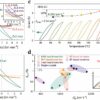In the realm of material science, the phenomena of polarization and polarity have conventionally been associated with insulators. However, envision a scenario where these characteristics could be induced in metals, potentially mitigating power losses attributed to semiconductors and extending the lifespan of batteries integrated into electronic devices.
A recent breakthrough achieved by the collaborative efforts of researchers in South Korea is the discovery of a method to induce and control polarization and polarity states within metals. Their study was published in Nature Physics on January 17, 2024.
Free electrons within metals exhibit unrestricted movement, making it difficult to align them in specific directions in order to induce polarization or polarity states. Additionally, the symmetric structure at both ends of metal crystals has historically posed challenges in inducing these electrical effects.
The research team employed flexoelectric fields to implement polarization and polarity states within metals. This type of field arises when the surface of an object undergoes non-uniform deformation, allowing for the manipulation of charge movement and electrical characteristics by subtly altering the lattice structure of metals.
The team applied external pressure to the widely used strontium ruthenate (SrRuO3) in the field of electronic components and semiconductors, generating a flexoelectric field. This metal oxide, characterized by heteroepitaxy, where crystals of strontium and ruthenium oxide with different shapes grow in the same direction, possesses a centrosymmetric structure.
The flexoelectric field altered the electronic interactions and lattice structure within strontium ruthenate, leading to a successful induction of polarization within the metal, causing a transformation in its electrical and mechanical properties and breaking the previously central symmetric structure. By employing flexoelectric polarizing and control of a ferromagnetic metal, the research team has successfully unraveled the mystery surrounding the implementation of polarization and polarity within metallic substances.
The study’s lead researcher, Professor Daesu Lee from the Department of Physics at Pohang University of Science and Technology (POSTECH), stated, “We are the first researchers to verify the universal implementation of polarity states within metallic substances. I am hopeful that the findings from this study will prove beneficial in crafting highly efficient devices within the semiconductor and electrical fields.”
More information:
Wei Peng et al, Flexoelectric polarizing and control of a ferromagnetic metal, Nature Physics (2024). DOI: 10.1038/s41567-023-02333-8
Provided by
Pohang University of Science and Technology
Citation:
Will electric fields lead the way in developing semiconductors with high power efficiency? (2024, January 31)


